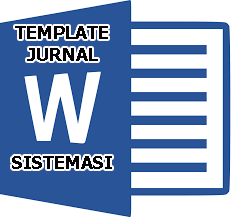Application of OLAP based Business Intelligence and Predictive Analysis (Random Forest Classifier and ARIMA) in a Fintech P2P Lending Company
Abstract
Keywords
Full Text:
PDFReferences
E. Budiyanti, “Mengatasi Kredit Macet Fintech Peer To Peer (P2P) Lending,” 2024. [Online]. Available: https://pusaka.dpr.go.id
D. K. Turban, Efraim, Ramesh Sharda, Dursun Delen, Business Intelligence: A Managerial Approach. Prentice Hall, 2011.
D. Loshin, Business Intelligence: The Savvy Manager’s Guide. Waltham: Morgan Kaufmann, 2013. DOI: https://doi.org/10.1016/C2010-0-67240-3.
A. Maulana and D. A. N. Wulandari, “Business Intelligence Implementation to Analyze Perfect Store Data using the OLAP Method,” J. Publ. Informatics Eng. Res., Vol. 3, No. 2, pp. 104–111, 2019, DOI: 10.33395/sinkron.v3i2.10036.
S. A. S. Mola, N. D. Rumlaklak, and D. P. N. Polly, Analisis Sentimen dengan Metode Random Forest. Bandung: Kaizen Media Publishing, 2024. doi: https://kaizenpublisher.co.id/portfolio/view/87.
Aswi and Sukarna, Analisis Deret Waktu : Teori dan Aplikasi. Makassar: Andira Publisher, 2006. DOI: http://eprints.unm.ac.id/id/eprint/21944.
W. Sulistyoningsih, I. N. Y. A. Wiajaya, and H. S. Alam, “Penerapan Model Business Intelligence pada Perusahaan Retail XLT untuk meningkatkan Strategi Pemasaran,” J. Ilm. Teknol. Inf. Asia, Vol. 17, No. 1, p. 33, 2023, DOI: 10.32815/jitika.v17i1.893.
A. R. I. Sipayung, N. E. Zendrato, T. A. Marbun, J. N. Telaumbanua, and O. Sihombing, “Penerapan Teknologi Business Intelligence dalam meningkatkan Strategi Penjualan dengan Metode OLAP pada Cafe Le Kahve,” J. TEKINKOM, Vol. 7, No. 2, pp. 628–636, 2024, DOI: 10.37600/tekinkom.v7i2.1529.
M. Anis, “Perancangan Sistem Business Intelligence menggunakan Olap sebagai Decision Financial Support berbasis Web dengan Metode Waterfall,” J. Sos. Teknol., Vol. 1, No. 10, pp. 131–144, 2021, DOI: 10.59188/jurnalsostech.v1i10.217.
M. Mahendra Alvanof and R. Kesuma Dinata, “Penerapan Algoritma Random Forest dalam Deteksi dan Klasifikasi Ransomware,” J. Elektron. dan Teknol. Inf., Vol. 5, No. 2, pp. 2721–9380, 2024, DOI: https://doi.org/10.5201/jet.v5i2.488.
E. Fitri, “Analisis Perbandingan Metode Regresi Linier, Random Forest Regression dan Gradient Boosted Trees Regression Method untuk Prediksi Harga Rumah,” J. Appl. Comput. Sci. Technol., Vol. 4, No. 1, pp. 58–64, 2023, DOI: 10.52158/jacost.v4i1.491.
M. M. Rofi, F. A. Setiawan, and F. Riana, “Perbandingan Metode K-NN dan Random Forest pada Klasifikasi Mahasiswa Berpotensi Dropout,” INFOTECH J., Vol. 10, No. 1, pp. 84–89, 2024, DOI: 10.31949/infotech.v10i1.8856.
H. Zhang et al., “Application of Random Forest Classifier in Loan Default Forecast,” in Communications in Computer and Information Science, 2020, pp. 410–420. DOI: 10.1007/978-981-15-8101-4_37.
R. C. Putri and L. Junaedi, “Penerapan Metode Peramalan Autoregressive Integrated Moving Average pada Sistem Informasi Pengendalian Persedian Bahan Baku (Studi Kasus : Toko Kue Onde-Onde Surabaya),” J. Ilmu Komput. dan Bisnis, Vol. XIII, No. 1, pp. 164–173, 2022, DOI: 10.47927/jikb.v13i1.293.
M. S. Fahmuddin, Ruliana, and S. M. Sri Mustika, “Perbandingan Metode ARIMA dan Single Exponential Smoothing dalam Peramalan Nilai Ekspor Kakao Indonesia,” VARIANSI J. Stat. Its Appl. Teach. Res., Vol. 5, No. 3, pp. 163–176, 2023, DOI: 10.35580/variansiunm193.
A. R. Pratama and Firdaus, “Perbandingan Metode ARIMA dengan Fuzzy Time Series Model Chen pada Peramalan Curah Hujan di Kota Bengkulu,” J. Math-UMB.EDU, Vol. 11, No. 3, pp. 154–166, 2024, DOI: 10.36085/mathumbedu.v11i3.6480.
S. Hanifah, F. Akbar, and R. P. Santi, “Implementasi Business Intelligence dan Prediksi menggunakan Regresi Linear pada Data Penjualan dan Breakage di PT XYZ,” J. Nas. Teknol. dan Sist. Inf., Vol. 8, No. 3, pp. 144–152, 2022, DOI: 10.25077/teknosi.v8i3.2022.144-152.
S. A. Moss, Larissa Terpeluk, Business Intelligence Roadmap: The Complete Project Lifecycle for Decision-Support Applications. Addison-Wesley Professional, 2003. DOI: https://dl.acm.org/doi/10.5555/773287.
J. C. J. Martilla, John A., “Importance-Performance Analysis,” J. Mark., Vol. 41, No. 1, pp. 77–79, 1977, DOI: https://doi.org/10.2307/1250495.
R. Kimball and M. Ross, The Data Warehouse Toolkit: The Complete Guide to Dimensional Modeling (3rd Edition). John Wiley & Sons, 2013. DOI: https://dl.acm.org/doi/10.5555/2543973.
DOI: https://doi.org/10.32520/stmsi.v14i6.5663
Article Metrics
Abstract view : 5 timesPDF - 3 times
Refbacks
- There are currently no refbacks.

This work is licensed under a Creative Commons Attribution-ShareAlike 4.0 International License.









